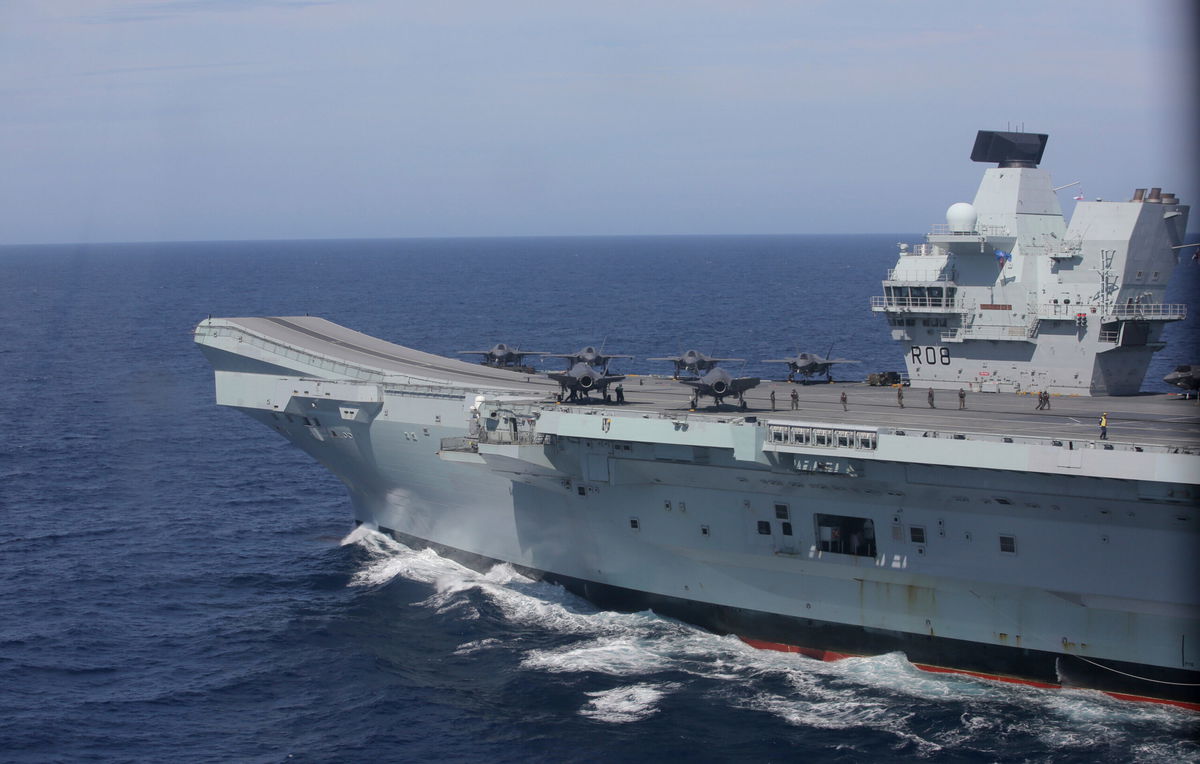British F-35 fighter jet crashes while flying off aircraft carrier HMS Queen Elizabeth

A British F-35
By Brad Lendon, CNN
A British F-35, one of the newest stealth fighter jets in the UK military, crashed into the Mediterranean Sea on Wednesday morning while operating off the aircraft carrier HMS Queen Elizabeth, the UK Defense Ministry said in a tweet.
The pilot ejected and was returned safely to the ship, and an investigation of the incident, which occurred during routine flight operations, had begun, the ministry said.
Britain operates the F-35B, a single-engine, short-take-off vertical landing variant of the US-developed stealth jet, which cost about $115 million each to build.
In June, F-35s operating off the Queen Elizabeth flew combat missions over the Middle East against ISIS, the first combat action for a UK aircraft carrier in more than a decade.
“The ability to operate from the sea with the most advanced fighter jets ever created is a significant moment in our history, offering reassurance to our allies and demonstrating the UK’s formidable air power to our adversaries,” British Defense Secretary Ben Wallace said in a statement at the time.
British F-35s saw their first combat in 2019, flying strikes against ISIS in Iraq and Syria from a Royal Air Force base on the island of Cyprus.
With plans to acquire 138 F-35s, Britain would be the third-largest operator of the Lockheed-Martin produced jets, behind the United States and Japan.
Both the US and Japan have lost F-35s to accidents.
In September 2018, a US Marine Corps F-35B crashed in South Carolina, the first-ever crash of an F-35.
In April 2019, a Japanese F-35A crashed into the Pacific Ocean off northern Japan, killing its pilot. The Japanese Defense Ministry later attributed that crash to spatial disorientation, meaning the pilot couldn’t sense his surroundings adequately and essentially flew the stealth fighter straight into the ocean during the night training mission.
In May 2020, a US Air Force F-35A crashed in Florida during routine training, but the pilot ejected safely.
After the crash Wednesday, the manufacturer of the F-35’s ejection seat, British company Martin-Baker, touted its hardware. “We’ve saved 7,662 air crew lives from around the world to date,” the company said on its Twitter page. Martin-Baker’s ejection seats are used on a range of aircraft, not just F-35s.
The British crash comes on the last leg of a voyage for Queen Elizabeth, leading what the UK calls Carrier Strike Group 21, that saw it go as far as Japan and South Korea to participate in exercises with allies and partners as the Royal Navy tries to increase its global presence.
When the strike group departed the UK in the spring, Britain’s Ministry of Defense described it as the largest concentration of maritime and air power to leave British shores in a generation.
US and Dutch warships are part of the strike group, and 10 US Marine Corps F-35s have been operating off the Queen Elizabeth along with eight British stealth jets.
When a version of this carrier strike group sailed together during military exercises off Scotland last fall, the UK Defense Ministry said it carried “the largest concentration of fighter jets to operate at sea from a Royal Navy carrier since HMS Hermes in 1983.”
It also said it was “the largest air group of fifth-generation fighters at sea anywhere in the world.” Fifth-generation fighters are the most advanced warplanes in the air.
There was no immediate word on whether the UK would try to recover the wreckage of the F-35 from the Mediterranean.
When the Japanese F-35 crashed in 2019, there was speculation the wreckage could be a target for potential adversaries such as Russia and China who could gain access to its advanced technology. But both the US and Japan dismissed that idea.
The-CNN-Wire
™ & © 2021 Cable News Network, Inc., a WarnerMedia Company. All rights reserved.